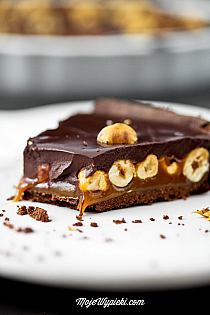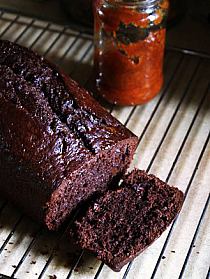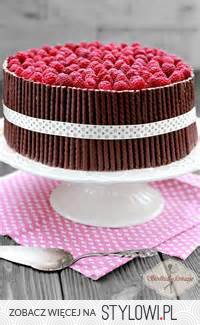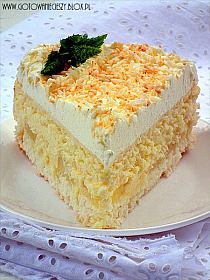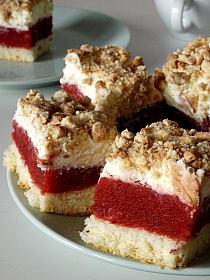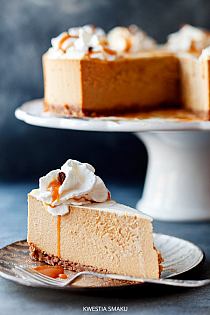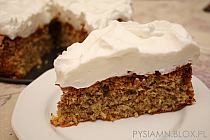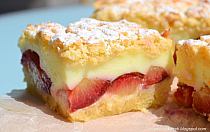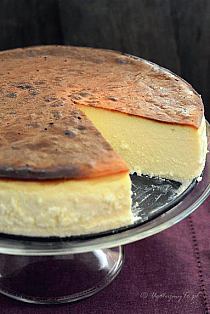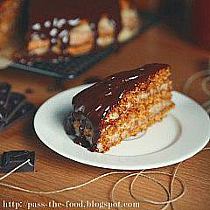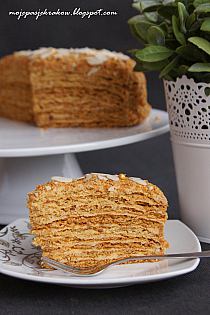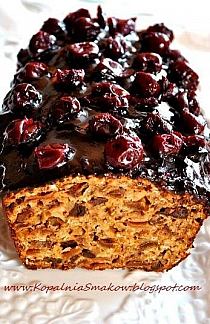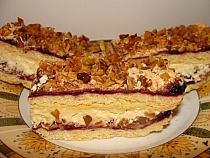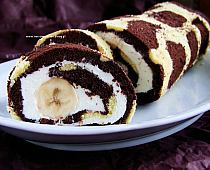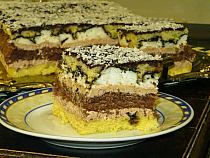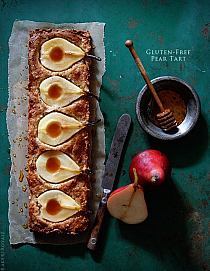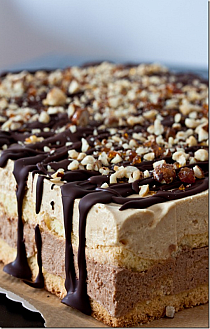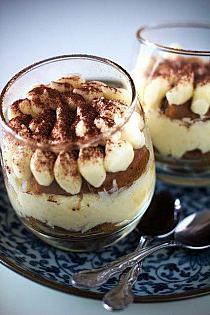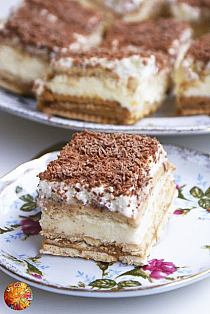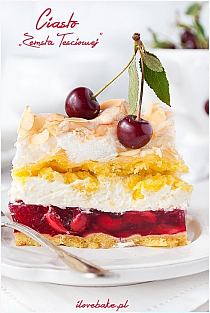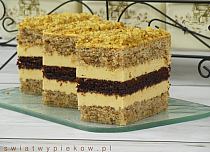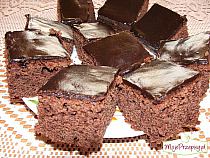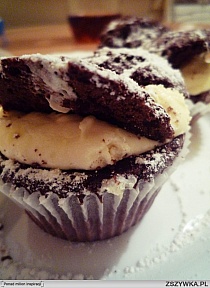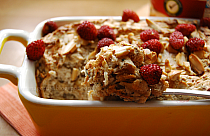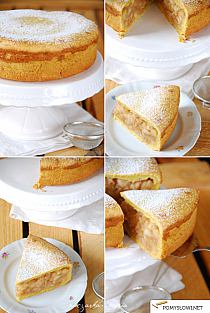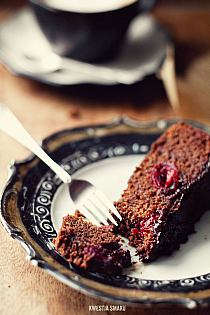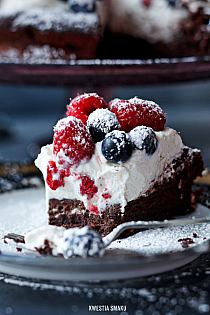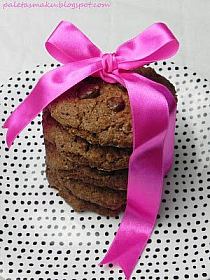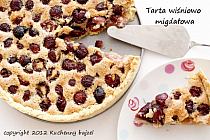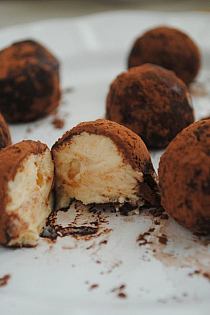-
Inspiracje
- Najnowsze
- Najpopularniejsze
- Zaskocz mnie
- Obserwowane
- MAGazyn
- Moda damska
- DIY - zrób to sam
- Kuchnia
- Uroda
- Wnętrza
- Humor
- Ogród
- Ślub
- Architektura
- Biżuteria
- Design
- Dziecko
- Film
- Fotografia
- Gadżety
- Historia
- Hobby
- Inne
- Książka
- Moda męska
- Muzyka
- Nauka i natura
- Plakaty i obrazy
- Podróże i miejsca
- Samochody i motocykle
- Sport i fitness
- Święta i uroczystości
- Tatuaż
- Zwierzęta
- Partnerzy
- KONKURS
-
Zakupy
-
ONA
- Ubrania
- Bielizna
- Bluzki
- Bluzy
- Dresy damskie
- Kombinezony
- Koszule
- Koszulki
- Kurtki
- Płaszcze
- Spodnie i leginsy
- Spodnie jeans
- Spódnice
- Stroje kąpielowe
- Sukienki i tuniki
- Swetry
- Szorty
- Zestawy
- Żakiety i kamizelki
- Buty
- Baleriny
- Botki
- Czółenka
- Espadryle
- Glany
- Japonki
- Kalosze
- Klapki
- Koturny
- Kowbojki
- Kozaki
- Obuwie Domowe
- Półbuty
- Sandały
- Sportowe i lifestyle
- Szpilki
- Tenisówki i Trampki
- Trapery i trekkingi
- Dodatki
- Bransoletki i zawieszki
- Breloki
- Czapki i kapelusze
- Etui
- Kolczyki, nausznice
- Kołnierzyki
- Kosmetyczki
- Naszyjniki, kolie i zawieszki
- Okulary
- Ozdoby do włosów
- Parasole
- Paski
- Pierścionki
- Plecaki
- Portfele
- Rękawiczki
- Skarpety
- Szaliki i chusty
- Torby i torebki
- Walizki
- Zegarki
- Zestawy biżuterii
- Zdrowie i uroda
- Akcesoria kosmetyczne
- Balsamy
- Bazy i podkłady
- Cienie do oczu
- Dezodoranty
- Higiena jamy ustnej
- Korektory
- Kredki
- Kremy i serum
- Lakiery
- Manicure i pedicure
- Maseczki
- Odżywki
- Peeling
- Perfumy i wody perfumowane
- Pielęgnacja po opalaniu
- Płyny żele i mydła
- Pomadki i błyszczyki
- Pudry
- Róże
- Stylizacja włosów
- Szampony
- Toniki i demakijaż
- Tusze
- Wody toaletowe
- Zestawy
-
ON
- Ubrania
- Bielizna
- Bluzy
- Kąpielówki
- Koszule
- Kurtki i płaszcze
- Marynarki kamizeki
- Spodenki i szorty
- Spodnie
- Swetry
- T-shirt długi rękaw
- T-shirt i Polo
- KULTURA
- GADŻETY
- DZIECKO
-
DOM I WNĘTRZE
- Wnętrza
- Akcesoria dom
- Do baru
- Do biura
- Do kuchni
- Kubki kufle i kieliszki
- Lustra
- Nakrycia stołu
- Oświetlenie
- Plakaty i tablice
- Pościele, poduszki i nakrycia
- Przechowywanie
- Tekstylia
- Zegary i budziki
-
Marki
- MARKI
- Adidas
- Adriatica
- Alter Core
- Armani
- Asics
- Atlantic
- Azzaro
- Barbie
- Bburago
- Be-U
- Benetton
- Bering
- Black Plum
- Burberry
- Bvlgari
- Cacharel
- Calvin Klein
- Canon
- Carolina Herrera
- Carrera
- Casio
- Celestron
- Chanel
- Chloe
- Clinique
- Cobi
- Coloud
- Converse
- David Beckham
- Davidoff
- Delbana
- Diesel
- Dior
- DISNEY
- DKNY
- Dolce & Gabbana
- DOXA
- Dr. Martens
- Dunhill
- Ecco
- Elizabeth Arden
- Esprit
- EVC DSGN
- Festina
- Fila
- Fisher Price
- Frederique Constant
- Givenchy
- Gucci
- Guerlain
- Guess
- Hasbro
- Helena Rubinstein
- Hermes
- Hi-Tec
- Hugo Boss
- Hunter
- Iceberg
- Ingersoll
- Issey Miyake
- Jean Paul Gaultier
- Jennifer Lopez
- Jil Sander
- Jimmy Choo
- Joop!
- Juicy Couture
- Kappa
- Kenzo
- Komono
- Lacoste
- Lalique
- Lancome
- Lanvin
- Lee
- Lego
- Lorus
- Marc Jacobs
- Marshall
- Masaki Matsushima
- Matchbox
- Mattel
- Max Factor
- Max&Co
- Mc Arthur
- Mizuno
- Mont Blanc
- Moschino
- Mr. Gugu & Miss Go
- My Little Pony
- New Balance
- Nike
- Nikon
- Nina Ricci
- Ninety Eight Clothing
- Nivea
- Nixon
- Nooka
- Obaku
- Onitsuka Tiger
- Paco Rabanne
- Pentax
- Pewex
- Pierre Cardin
- Playboy
- Prada
- Puma
- Ralph Lauren
- Reebok
- Regatta
- Revlon
- Rexona
- Rider
- Salomon
- Salvatore Ferragamo
- Shelyak
- Shiseido
- Skagen
- Swarovski
- Takahashi
- Thierry Mugler
- Timberland
- Timex
- Tommy Hilfiger
- UGC
- Urbanears
- Valentino
- Vans
- Versace
- Viktor & Rolf
- Vixen
- Welly
- William Optics
- Wrangler
- Yimaida
- Yukon
- Yves Saint Laurent
-
ONA
-
Szukaj
- Losuj
Kuchnia
słodkości
How to bake a sponge cake
Classic sponge cake
4 eggs (as a size guide, she uses eggs from a 700g carton, so 55-60g per egg)
Pinch of salt
¾ cup caster sugar
1 cup self-raising flour
4 tbsp of liquid (milk or water or a combination of both)
1 dessertspoon butter
Take the eggs out of the fridge and let them sit until they reach room temperature. Pre-heat the oven to moderate (see the tips below plus the road test results for guidance on this). Grease two 8-inch (20cm) sandwich tins and dust with flour, shaking out any excess. Crack the four eggs into a bowl, add a pinch of salt, and beat until they just reach the frothy stage. Add the sugar a little at the time, beating as you go. This will get creamier and creamier. At the point where you can stop the beaters, take them out and draw a figure eight with what’s running off them, you’re done (as a guide, this took me 8 to 10 minutes on medium speed). You need to be able to see the figure eight on the top of the mixture.
Sift the flour into a bowl. Add the butter to the milk/water and heat this until the butter melts (in the microwave is fine). Add the flour to the egg and sugar mixture, incorporating this gently with a whisk until combined. While folding in the flour dribble in the water/milk and melted butter.
Divide the mixture between the two tins and stick them in the oven. Check after 15 minutes. If not ready, cook for another five minutes (or until cooked). The cake is ready when it starts to come away from the side of the tin and it springs back when touched lightly in the centre.
Gently turn the cakes onto a tea towel lined cake rack. The top of the cake should be facing up so it doesn’t get any marks on it from the rack. Cover with another tea towel and let it cool for about 30 minutes. Once cooled fill with your choice of filling and serve.
Some of her other tips:
When beating the eggs and sugar you want to be quick but gentle. Liz uses an electric hand beater as she finds the big mix masters like a Kenwood Chefs and Kitchen Aids too vigorous.
Don’t use a plastic bowl to beat the eggs and sugar. The eggs won’t beat up properly.
When adding the flour to the egg and sugar mixture, don’t beat all the air out. But make sure the flour is mixed in properly.
Before placing the cake tins in the oven, tap each tin on the counter four times to let the air bubbles on the top pop.
The sponge should be cooked in 15 to 20 minutes. The longer it takes to cook the coarser the crumb is going to be. Prize winning cakes have a fine crumb so aim for 15 minutes. This is where getting the temperature right is important. In her old kitchen Liz would cook sponges in her gas oven on 160 degrees fan forced. But the oven in her new kitchen is different.
Make them the day you’re going to eat them. Sponges are best eaten fresh.
Road testing the sponge cake
Photo: Sponge number one is in the foreground, sponge number two in the background.
I’ve tried and failed with sponges before and never imagined I would describe baking them as ‘easy’. But using Liz’s recipe and following her tips really did the trick. The only sticking point is the temperature. My oven is electric. I cooked the first cake at 180 degrees and it took 25 minutes. It rose well and the colour was lovely and golden but the crumb was quite coarse.
I cooked the second on 180 degrees fan forced and it took 15 minutes. It rose but not as well as the first, and the colour was a bit dark. But the crumb was lovely and fine. It was an absolute joy to eat (even if I do say so myself!).
I wouldn’t say either of them were show quality – the only prize I’d be awarded at this point is the wooden spoon, which would be handy but beside the point – but I sense I’m only one or two more cakes away from getting it right (Liz suggests I try 170 degrees fan forced next time). For home consumption at least.
Read more: http://www.smh.com.au/lifestyle/homestyle/tried-and-tasted/how-to-make-a-perfect-sponge-cake-20111010-1li3i.html#ixzz40VESmcQa
Follow us: @smh on Twitter | sydneymorningherald on Facebook
Classic sponge cake
4 eggs (as a size guide, she uses eggs from a 700g carton, so 55-60g per egg)
Pinch of salt
¾ cup caster sugar
1 cup self-raising flour
4 tbsp of liquid (milk or water or a combination of both)
1 dessertspoon butter
Take the eggs out of the fridge and let them sit until they reach room temperature. Pre-heat the oven to moderate (see the tips below plus the road test results for guidance on this). Grease two 8-inch (20cm) sandwich tins and dust with flour, shaking out any excess. Crack the four eggs into a bowl, add a pinch of salt, and beat until they just reach the frothy stage. Add the sugar a little at the time, beating as you go. This will get creamier and creamier. At the point where you can stop the beaters, take them out and draw a figure eight with what’s running off them, you’re done (as a guide, this took me 8 to 10 minutes on medium speed). You need to be able to see the figure eight on the top of the mixture.
Sift the flour into a bowl. Add the butter to the milk/water and heat this until the butter melts (in the microwave is fine). Add the flour to the egg and sugar mixture, incorporating this gently with a whisk until combined. While folding in the flour dribble in the water/milk and melted butter.
Divide the mixture between the two tins and stick them in the oven. Check after 15 minutes. If not ready, cook for another five minutes (or until cooked). The cake is ready when it starts to come away from the side of the tin and it springs back when touched lightly in the centre.
Gently turn the cakes onto a tea towel lined cake rack. The top of the cake should be facing up so it doesn’t get any marks on it from the rack. Cover with another tea towel and let it cool for about 30 minutes. Once cooled fill with your choice of filling and serve.
Some of her other tips:
When beating the eggs and sugar you want to be quick but gentle. Liz uses an electric hand beater as she finds the big mix masters like a Kenwood Chefs and Kitchen Aids too vigorous.
Don’t use a plastic bowl to beat the eggs and sugar. The eggs won’t beat up properly.
When adding the flour to the egg and sugar mixture, don’t beat all the air out. But make sure the flour is mixed in properly.
Before placing the cake tins in the oven, tap each tin on the counter four times to let the air bubbles on the top pop.
The sponge should be cooked in 15 to 20 minutes. The longer it takes to cook the coarser the crumb is going to be. Prize winning cakes have a fine crumb so aim for 15 minutes. This is where getting the temperature right is important. In her old kitchen Liz would cook sponges in her gas oven on 160 degrees fan forced. But the oven in her new kitchen is different.
Make them the day you’re going to eat them. Sponges are best eaten fresh.
Road testing the sponge cake
Photo: Sponge number one is in the foreground, sponge number two in the background.
I’ve tried and failed with sponges before and never imagined I would describe baking them as ‘easy’. But using Liz’s recipe and following her tips really did the trick. The only sticking point is the temperature. My oven is electric. I cooked the first cake at 180 degrees and it took 25 minutes. It rose well and the colour was lovely and golden but the crumb was quite coarse.
I cooked the second on 180 degrees fan forced and it took 15 minutes. It rose but not as well as the first, and the colour was a bit dark. But the crumb was lovely and fine. It was an absolute joy to eat (even if I do say so myself!).
I wouldn’t say either of them were show quality – the only prize I’d be awarded at this point is the wooden spoon, which would be handy but beside the point – but I sense I’m only one or two more cakes away from getting it right (Liz suggests I try 170 degrees fan forced next time). For home consumption at least.
Read more: http://www.smh.com.au/lifestyle/homestyle/tried-and-tasted/how-to-make-a-perfect-sponge-cake-20111010-1li3i.html#ixzz40VESmcQa
Follow us: @smh on Twitter | sydneymorningherald on Facebook
Źródło:
smh.com.au
odwiedź stronę
MA==
Podobne inspiracje
2869
96
1
Szybka tarta borówkowa
Składniki na 8 porcji:
(na form…
681
56
PROSTE, WILGOTNE CIASTO CZEKOLADOWE.
200 g mąki
30 g…
863
43
Sernik kokosowo ananasowy
Spód:
* 200 g wiórków koko…
623
35
Drożdżówki z serem - Przepis
1840
28
Crispy Biscuits: Odkrycie tygodnia: Ciasto z najlepszą…
113
25
Sernik Pumpkin Spice Latte | Kwestia Smaku
154
24
Migdałowiec bez mąki
Składniki:
Na ciasto: (średnica…
88
23
45 Spring Cake and Cupcake Decorating Ideas | Family Ho…
118
17
moje pasje: Tort wielowarstwowy miodowo-kajmakowy z orz…
190
15
Ciasto z orzechami i kremem karpatkowym przepis - Gotuj…
467
12
CIASTO FRANCUSKIE Z SEREM.
pieczone ale szybkie:)
Skła…
392
12
rolada żyrafa z bitą śmietaną i bananami
składniki:
5…
132
11
Ślinka cieknie :)
206
9
CIASTO ZEMSTA TEŚCIOWEJ
SKŁADNIKI NA KRUCHE CIASTO:
3 s…
123
7
MURZYNEK.
3 jajka całe
3 szkl mąki
1,5 szkl mleka
1 sz…
73
7
Zapiekany pudding owsiany z ricottą /1 porcja/:
4 łyżki…
19
6
Murzynek - Przepis
345
5
Ciasto czekoladowe
Składniki:
Opadające ciasto czeko…
103
4
Czekoladowy ganache z wiśniami
Składniki:
200 g gorzkie…
16
4
Angielska tarta wiśniowo-migdałowa
W 4 innych kolekcjach



